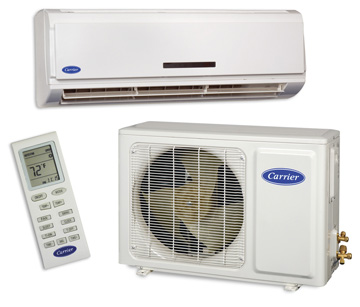Choosing the right sized air conditioner is essential for those who want to remain comfortable in the summer. If its too small, your air conditioner won’t cool your targeted area sufficiently. If it’s too large, the room or rooms it will climatize will be too cold. Selecting the proper air conditioner is worth the few moments that you will spend performing calculations as it will result in better energy efficiency and greater comfort.
Window Units
In some ways, calculating figures for these units is easier because you are dealing with a smaller areas and fewer environmental factors. Measure the square footage of each room to be conditioned by multiplying the length by the width. If the room is of a shape other than a square or rectangle, divide the area into measurable sections. Calculate square footage in triangular section by multiplying 0.5 x length x width. Add those calculations together with those from square and rectangular sections to come up with square footage. Rooms that are shaded need 10% less capacity, while those that receive a lot of sunlight need 10% more capacity.
Determine Required Cooling Capacity
British Thermal Units, commonly known as BTUs, is the measure that determine cooling capacity for both room air conditioners and central units. The United States Department of Energy recommends the following guidelines:
• 5,000-7,000 BTU for 100-300 square feet
• 8,000-12,0000 BTU for 550-1,000 square feet
• 14,000-18,000 BTU for 1,000-1,200 square feet
• 21,000-24,000 BTU for 1,500-2,000 square feet
• 30,000 BTU for 2,000-2,500 square feet
Central Air Conditioning Considerations
You can use the same method to determine the base calculation for central air conditioning units. Look on your property tax bill or other official statements to determine the total square footage of your home. Make sure to exclude areas that are not cooled such as the garage or basement.
Determining correct sizing for central air conditioning systems should be done by a professional familiar with Manual J calculations. In addition to square footage, this method takes local climate, building envelope, sunlight orientation and similar factors into consideration to determine proper HVAC sizing.
For more information on heating, cooling and keeping your home energy efficient, follow our blog.

